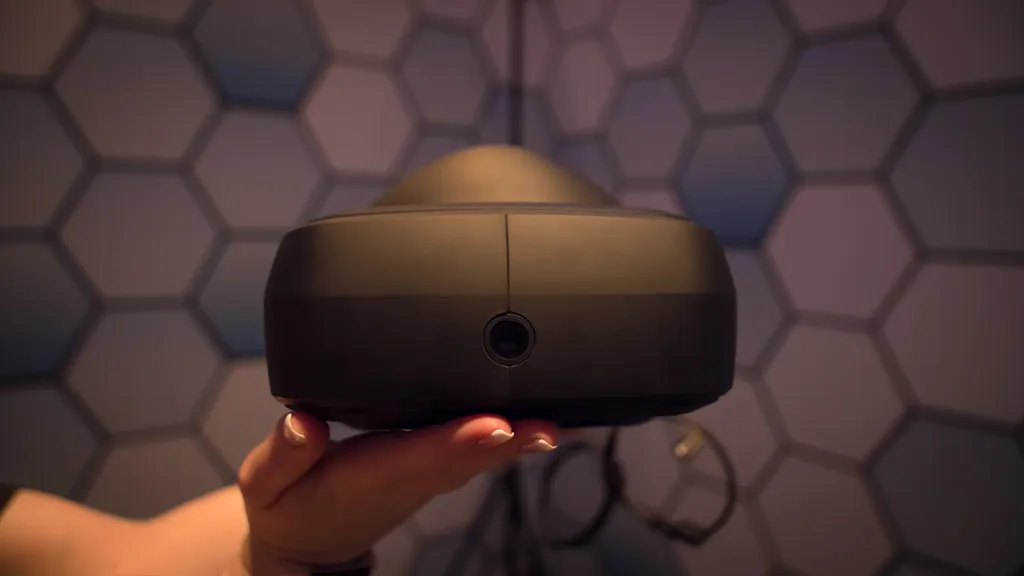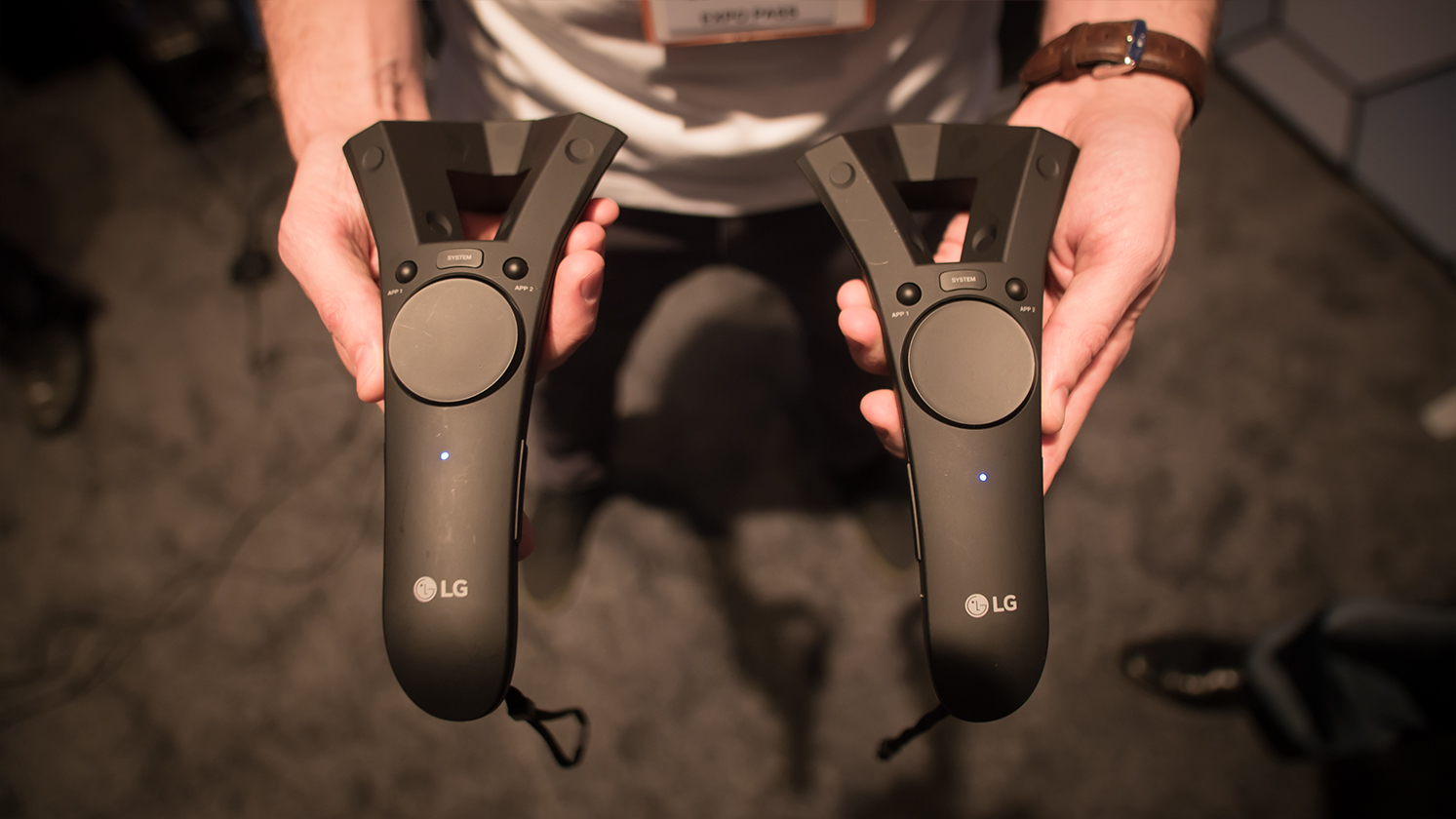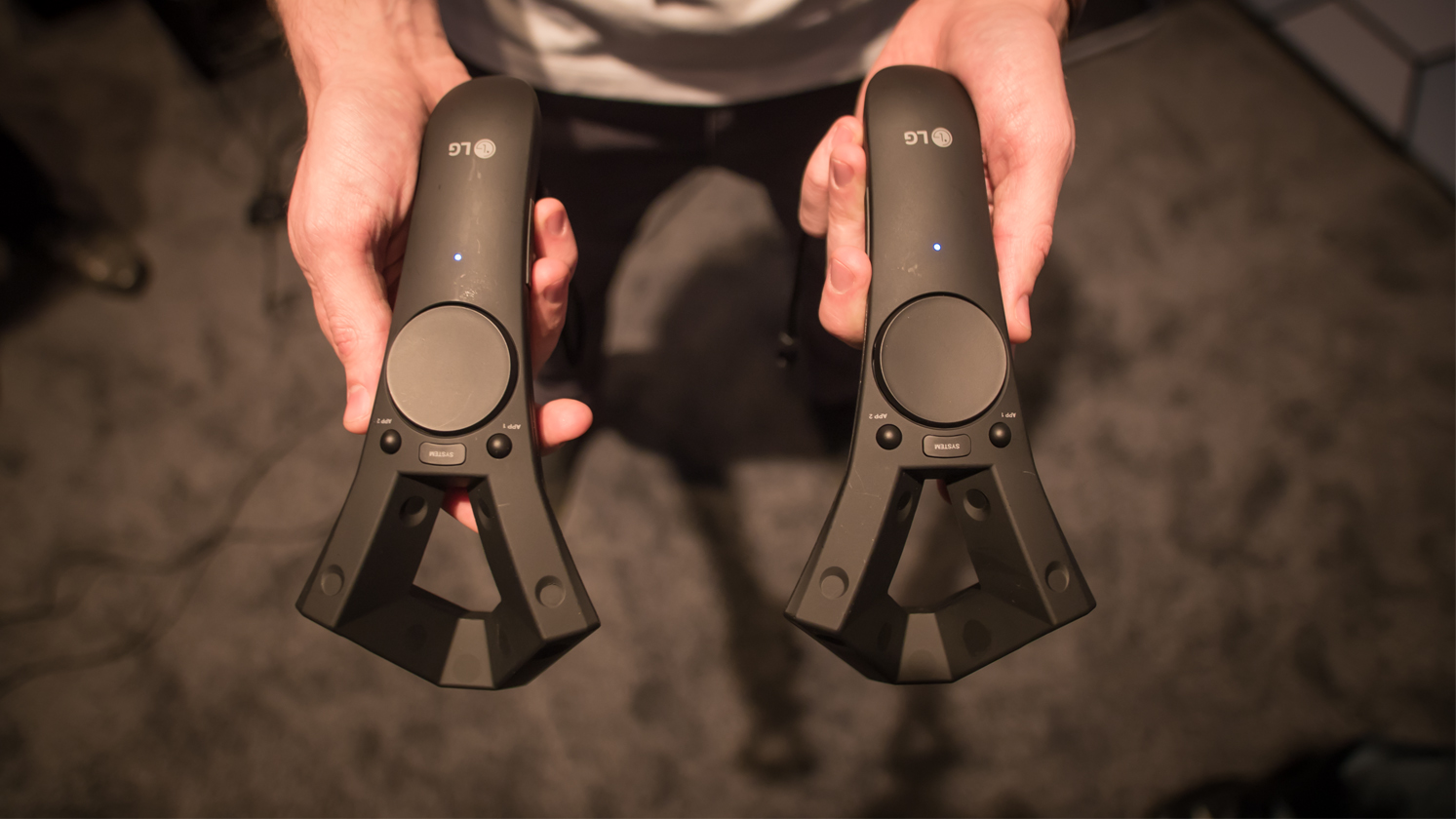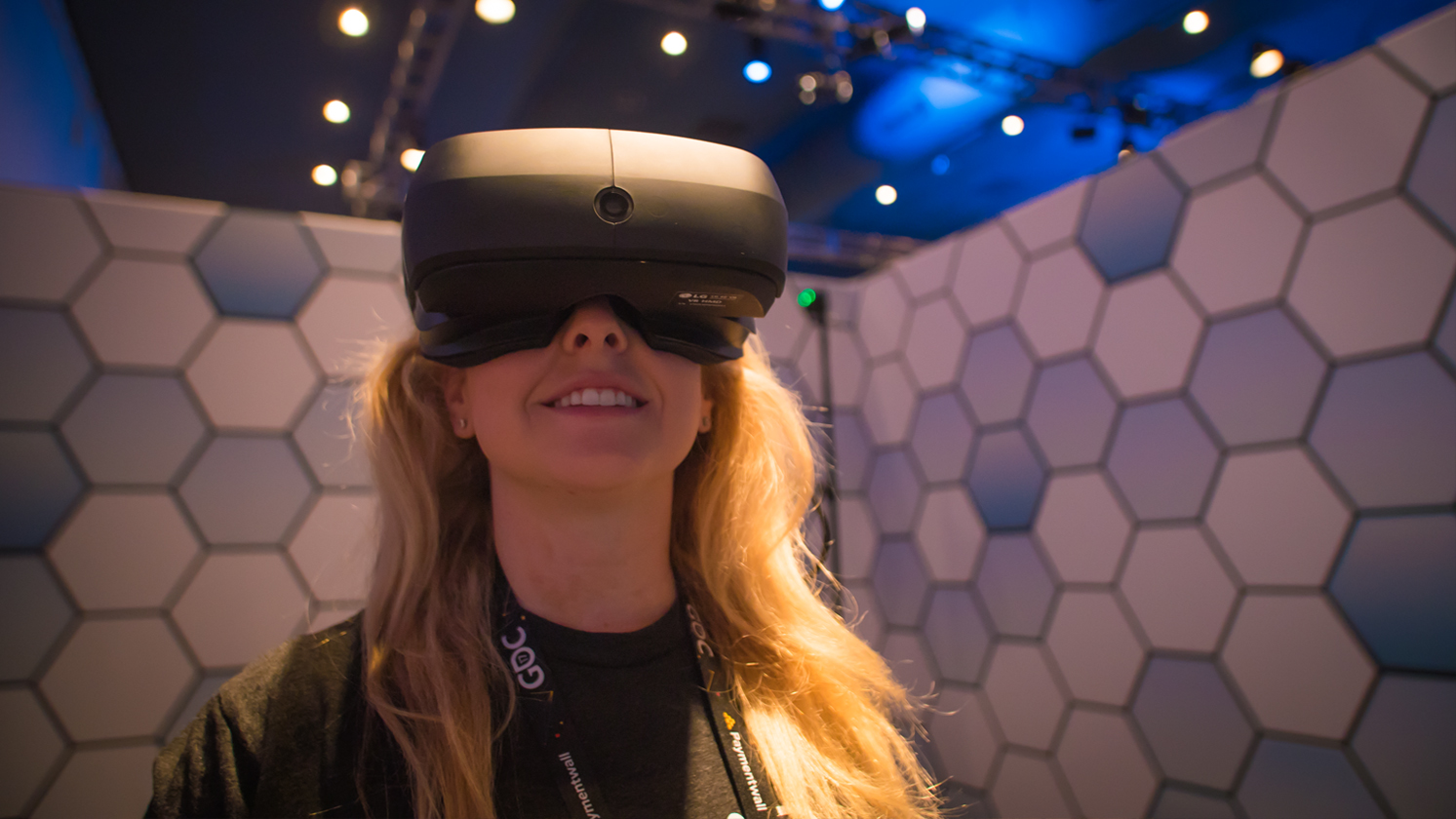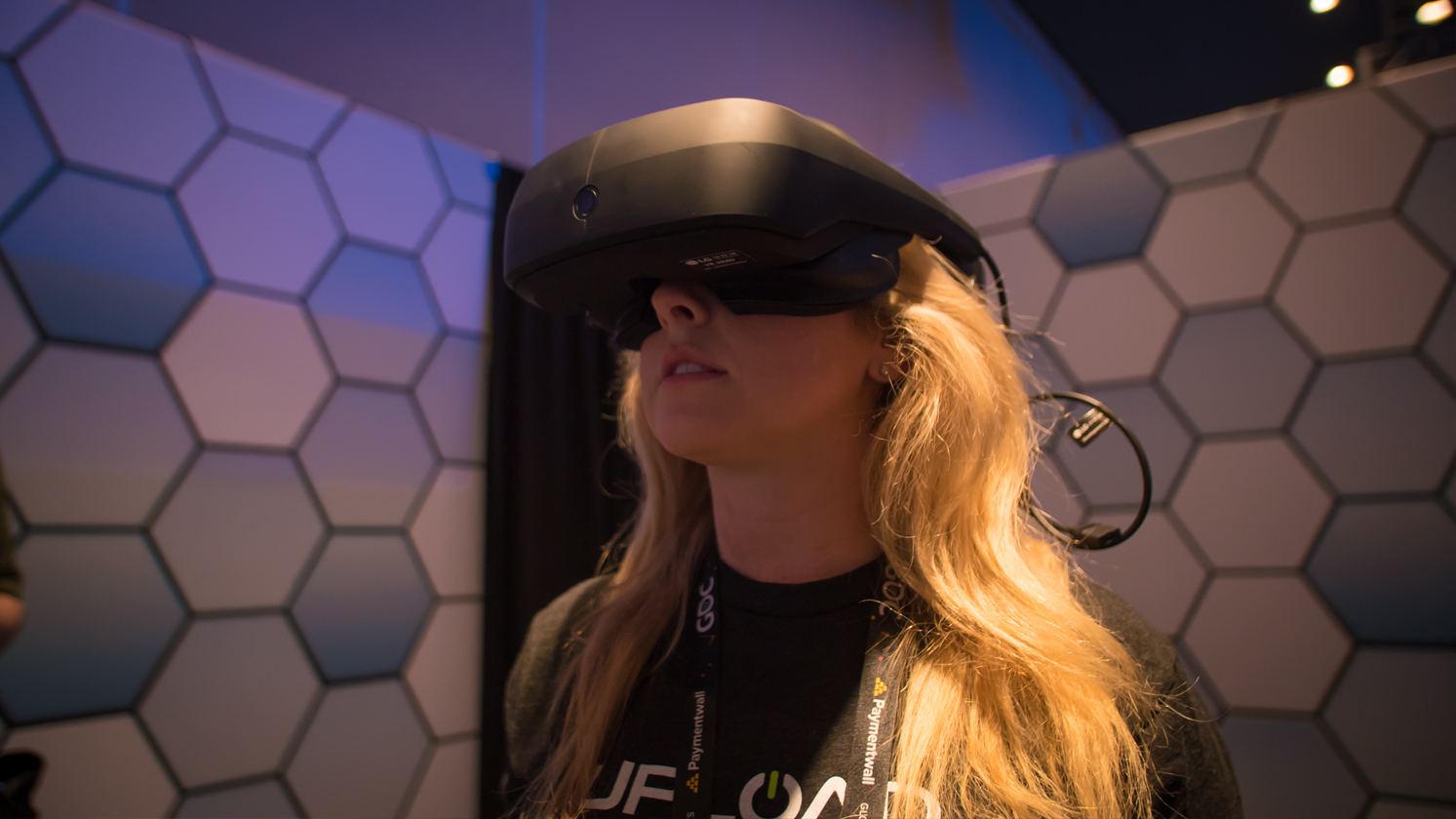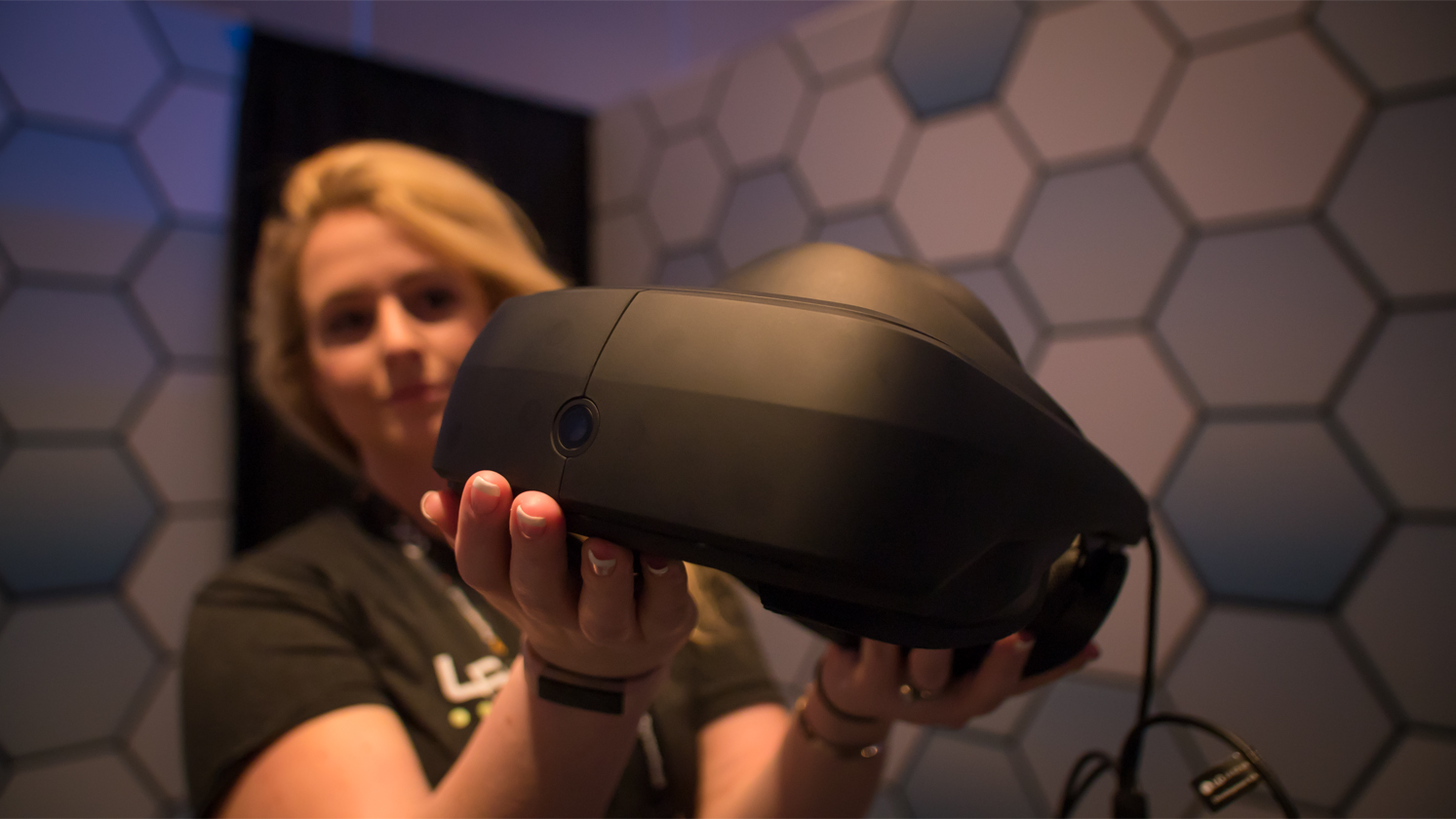LG’s upcoming VR headset powered by Valve’s SteamVR Tracking represents an important milestone in the development of the industry, and we just got the first hands-on.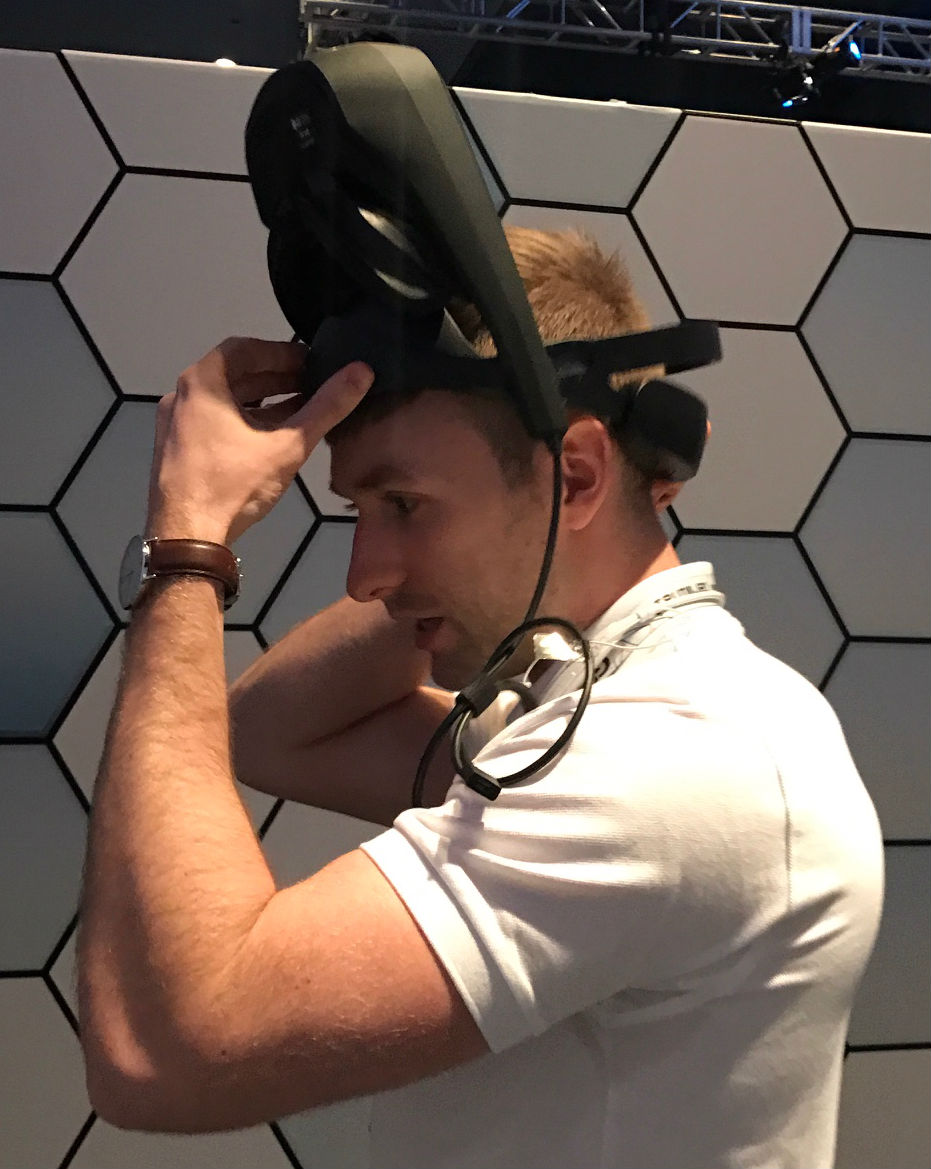
The prototype revealed at the Game Developers Conference uses the same tracking technology from Valve that’s used in the HTC Vive which shipped last year. It also runs at 90 frames per second and flips up away from the face like the Microsoft headset we tried earlier this week. This should make VR developers very happy.
Here are the specs provided by LG:
- Two panels (one for each eye) with a resolution of 1440 by 1280 each
- OLED display from LG
- 3.64 inches diagonal
- 90 Hz refresh rate
- 110 degree FOV
These dev kits are going out to “select partners” by the end of this week. Representatives from the company were reluctant to commit to a time frame for a consumer release, but said an announcement should come some time this year after they get feedback from partners and developers.
The tracking base stations used for the headset were made by LG but didn’t look too different from what we’ve seen already. I got to spend about six minutes inside the headset, two minutes each in three experiences including Longbow from Valve and Firebird. While the fit on my head could probably have been tightened a bit and LG made sure to be clear this is an early version of the device, to my eyes the visuals inside the headset already felt roughly comparable to the Vive. From my six minutes in there I don’t feel like I can say whether FOV or resolution felt higher or lower than the Vive. I can say, however, that it felt at least on par and that’s pretty significant. In other words, there’s another player in the SteamVR ecosystem using different components and the quality of it feels a lot like what we’ve come to expect from room-scale VR powered by Valve’s tracking technology.
“It’ll be similar prices” compared with the current generation of VR hardware, said Richard Taylor, an assistant research engineer at LG. As far as improvements we can expect before consumer release, “it completely depends what feedback we get, but…I can probably say the display will improve, the weight will probably get lighter.”
I thoroughly enjoyed my time in LG’s headset. It features a pass through camera as well, but we didn’t use it. The tracking sensors are nearly invisible hidden along the surface of the device. I was asked by LG when I came out whether I noticed any visual problems in the headset, and I really didn’t. It felt like a smooth, highly detailed visual experience from start to finish and I look forward to a hopefully longer visit with the new headset in the future.

